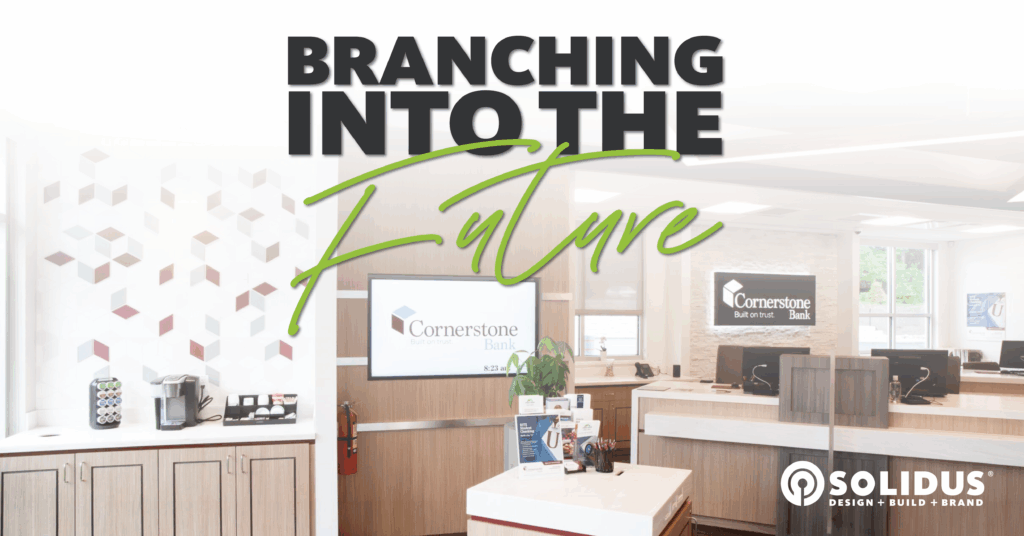Despite an ongoing shift towards digital banking, physical branches continue to play a crucial role in the banking ecosystem, serving multiple functions beyond mere transaction processing. Financial Institutions (FIs) are adapting by transforming their branches into more versatile spaces that focus on advisory services, digital education, and community engagement, ensuring that they remain relevant in the digital age.
This transformation has been even more impactful for community banks and credit unions. Even with the decline in the number of people visiting branches, these physical locations remain important for several reasons:
Personal and Complex Services: Branches offer a space for personal interaction that is crucial for complex financial services, such as mortgages, loans, and wealth management, which often require detailed discussion and personal advice that is difficult to replicate online.
Customer Trust and Relationship Building: Face-to-face interactions in branches play a vital role in building and maintaining trust between customers and their financial institutions. They allow FIs to offer personalized service and advice, fostering stronger customer relationships.
Brand Presence and Visibility: Physical branches serve as tangible representations of a FI’s brand in the community, contributing to brand presence and visibility. They act as marketing tools, reinforcing the FI’s commitment to serving the needs of the local community.
Financial Education and Advice: Branches provide a venue for financial education seminars and one-on-one advice, helping customers make informed decisions about their financial health and planning.
Access for All Demographics: While digital banking is on the rise, not all customers are comfortable or able to use digital services. Branches ensure that banking services remain accessible to all segments of the population, including those who prefer in-person banking or lack access to digital banking tools.
Emergency Services and Problem Resolution: For immediate financial needs or resolving issues that cannot be handled online, bank branches offer a direct point of contact. Customers often find it easier and more reassuring to deal with problems in person.
Community Hub: Beyond banking services, branches often act as community hubs, hosting events and meetings that bring people together and contribute to the bank’s role in community engagement.
Compliance and Documentation: Certain banking transactions require physical documentation and in-person identification for compliance reasons. Branches facilitate these transactions by providing a secure environment for processing sensitive information.
The current trends in office space layout for banks and credit unions are shifting towards creating spaces that are not only functional but also provide memorable experiences for customers. Design trends emphasize unconventional signage, experiential marketing, interactive elements, and the incorporation of digital solutions to make the brand come alive within the branch. The goal is to move beyond traditional banking transactions and engage customers in a way that encourages them to reconsider their banking habits positively.
Bank and credit union designs are evolving to include open-concept floor plans, multi-functional spaces, community rooms, coffee bars, coworking stations, and elements that contribute to creating a community feel. These designs aim to make branches more inviting and useful for customers and members, with a focus on comfort, ease, and unique experiences. Incorporating local touches and sustainable elements also plays a significant role in connecting with the community and reducing environmental impact.
Digital integration within physical spaces is becoming crucial. This includes digital signage for advertising and information, self-service tools like ATMs and tablets, and mobile tellers to enhance customer convenience and reduce wait times. The aim is to blend digital and physical banking experiences seamlessly, providing customers with efficient and enjoyable visits.
Branch design is also a critical factor in productivity and employee satisfaction. Interior renovations are a crucial first step in cultivating a positive work environment and filling employees with a sense of pride about where they work. Design elements like color, lighting, and fabric are important, as they can affect mood and efficiency. Employees with a positive attitude set the tone for all customer interactions.
The need for physical branches will never disappear, but they must be designed and built to align with the changing needs and expectations of the customers they serve. Successful branches aren’t just transactional but also experiential, fostering a sense of community and well-being among customers and employees.



